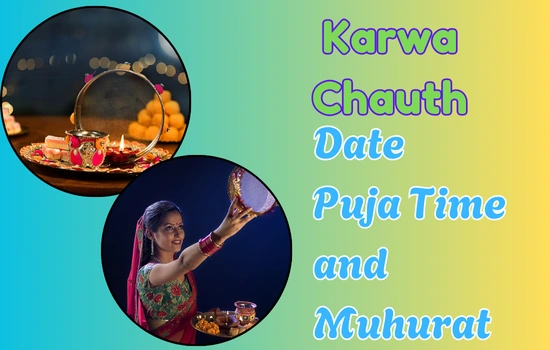Karwa Chauth is a significant Hindu festival observed by married women, who undertake a rigorous fast from sunrise to moonrise, praying for the longevity and prosperity of their husbands. In 2025, Karwa Chauth falls on Friday, October 10.
Key Timings for Karwa Chauth 2025

- Date: Friday, October 10, 2025
- Chaturthi Tithi Begins: 10:54 PM on October 9, 2025
- Chaturthi Tithi Ends: 7:38 PM on October 10, 2025
- Fasting Duration: 6:19 AM to 8:13 PM
- Puja Muhurat: 5:57 PM to 7:11 PM
- Moonrise Time: 8:13 PM
These timings are based on Indian Standard Time (IST) and may vary slightly depending on your specific location. It’s advisable to consult local sources or a reliable Panchang for precise timings.
Significance of Karwa Chauth
Karwa Chauth is a testament to the deep-rooted cultural values and traditions that emphasize the sanctity of marriage. The term “Karwa” refers to an earthen pot used during the rituals, and “Chauth” denotes the fourth day after the full moon, aligning with the Krishna Paksha Chaturthi in the month of Kartik. This festival underscores the unwavering love, dedication, and commitment of a wife towards her husband’s well-being.
Rituals and Observances
1. Sargi: Before dawn, mothers-in-law prepare a pre-dawn meal known as Sargi for their daughters-in-law. This meal includes fruits, sweets, and other nourishing items to sustain them throughout the day-long fast.
2. Nirjala Vrat (Fasting): Women observe a strict fast without consuming food or water from sunrise until they sight the moon. This act symbolizes their devotion and prayer for their husband’s longevity.
3. Puja Preparation: In the evening, women dress in traditional attire, often wearing bridal clothes and adornments. They gather with other married women to perform the Karwa Chauth Puja, which involves storytelling, singing, and passing around a thali (plate) decorated with diyas (lamps), sweets, and a Karwa (earthen pot).
4. Puja Rituals: During the puja, women listen to the Karwa Chauth Vrat Katha (story) that narrates the significance and origins of the festival. They also pray to Goddess Parvati and Lord Shiva, seeking blessings for their husbands.
5. Moonrise and Breaking the Fast: After sighting the moon, women view its reflection through a sieve or a dupatta and then look at their husbands through the same. This ritual is followed by offering water (Arghya) to the moon and praying for their husband’s well-being. The husbands then offer the first sip of water and a morsel of food to their wives, marking the end of the fast.
Cultural Variations
While the essence of Karwa Chauth remains consistent, regional variations exist:
- Punjab and Haryana: The festival is celebrated with great enthusiasm, with women participating in community gatherings and performing Gidda and other traditional dances.
- Uttar Pradesh: The rituals are deeply rooted in traditional practices, with a strong emphasis on storytelling and communal prayers.
- Rajasthan: Women often send beautifully decorated Karwas filled with sweets and gifts to their daughters and daughters-in-law, symbolizing love and blessings.
Modern Adaptations
In contemporary times, the festival has evolved, with many unmarried women also observing the fast, praying for an ideal life partner. Additionally, some men have begun to fast alongside their wives, symbolizing mutual love and respect.
Conclusion
Karwa Chauth is a celebration of marital love, trust, and devotion. By observing the fast and participating in the rituals during the specified muhurat, women seek divine blessings for their husband’s longevity and prosperity. As you prepare to observe Karwa Chauth on October 10, 2025, may the festival strengthen the bonds of love and bring joy and fulfillment to your marital life.

